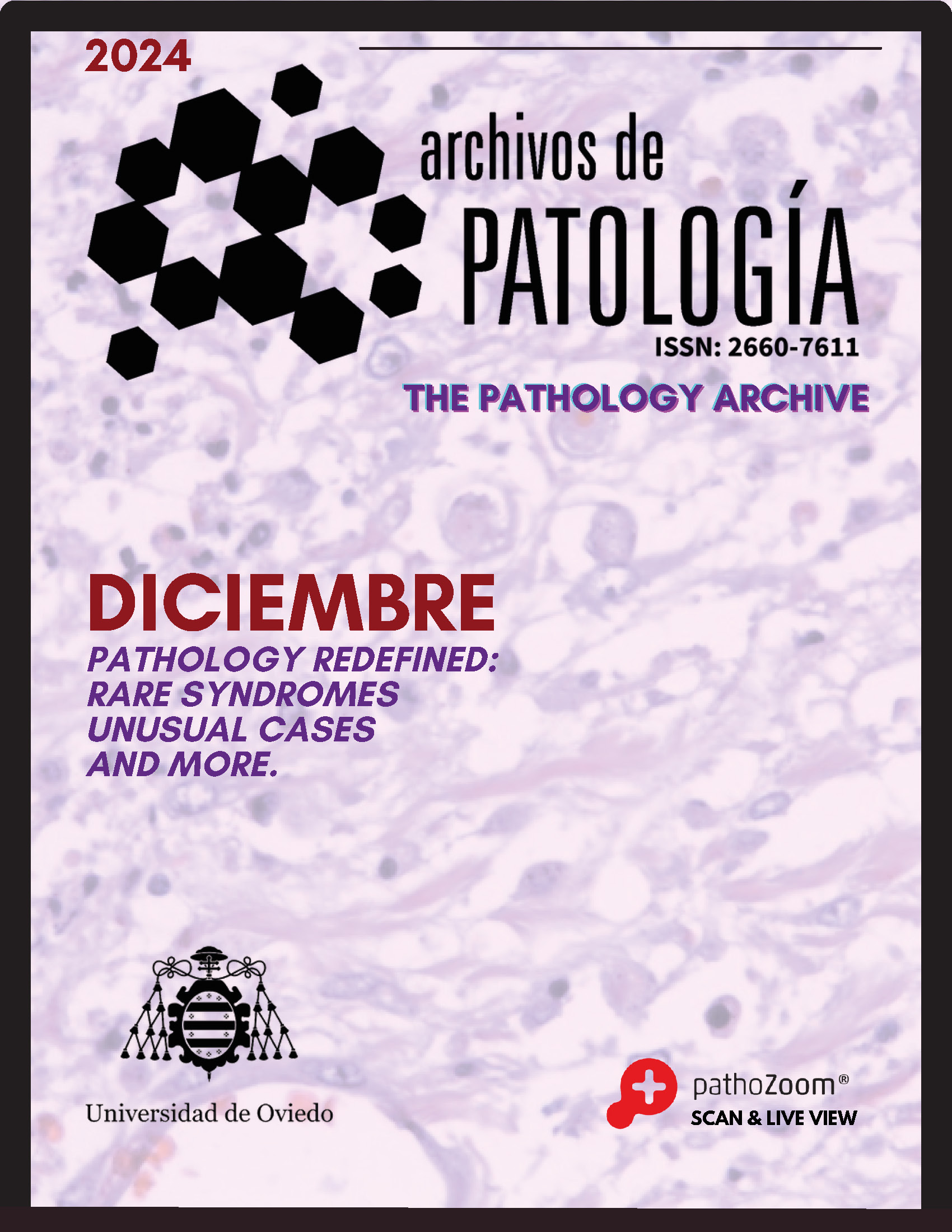Resumen
Epididymo-orchitis is a common cause of acute scrotal pain, typically resulting from bacterial infections, with approximately 600,000 cases diagnosed annually in the United States. While most cases are attributed to sexually transmitted pathogens such as Neisseria gonorrhoeae or Chlamydia trachomatis in younger men and gram-negative organisms like Escherichia coli in older patients, rare parasitic infections can complicate the clinical picture. We present the case of an 82-year-old male with a complex medical history, including severe coronary artery disease, hypertension, and a recent Transcatheter Aortic Valve Implantation (TAVI), who developed left-sided scrotal pain and swelling. Initially diagnosed with orchiepididymitis and treated with antibiotics, his condition deteriorated, leading to recurrent febrile episodes and worsening symptoms. Imaging revealed a multiseptated scrotal collection and ischemic testicular changes. Surgical exploration uncovered purulent material, which cultured Morganella morganii, and histopathological analysis surprisingly revealed Entamoeba histolytica morphology with phagocytosed erythrocytes, an exceedingly rare finding in extraintestinal amebiasis. Stool and serological tests for E. histolytica were negative, suggesting isolated scrotal involvement. The patient underwent left orchiectomy, received broad-spectrum antibiotics followed by targeted therapy, and recovered without recurrence over a five-month follow-up.
This case emphasizes the importance of considering rare parasitic infections in atypical or refractory presentations of epididymal-orchitis, particularly in regions where E. histolytica is endemic or in patients with unique clinical histories. The unusual scrotal involvement of E. histolytica, with only one other documented case, highlights the diagnostic challenges and emphasizes the role of a multidisciplinary approach combining surgical intervention, microbiological studies, and tailored antimicrobial therapy. This report expands the understanding of extraintestinal amebiasis and reinforces the need for vigilance in identifying rare etiologies in urological conditions.
Citas
“Amebiasis | CDC Yellow Book 2024.” Accessed: Jan. 01, 2025. [Online]. Available: https://wwwnc.cdc.gov/travel/yellowbook/2024/infections-
diseases/amebiasis?utm_source=chatgpt.com
M. Kantor et al., “Entamoeba Histolytica: Updates in Clinical Manifestation, Pathogenesis, and Vaccine Development,” Can. J. Gastroenterol. Hepatol., vol. 2018, p. 4601420, Dec. 2018, doi: 10.1155/2018/4601420.
R. H. Prasetyo, “Scrotal abscess, a rare case of extra intestinal amoebiasis,” Trop. Biomed., vol. 32, no. 3, pp. 494–496, Sep. 2015.
P. Morán et al., “Amoebiasis: Advances in Diagnosis, Treatment, Immunology Features and the Interaction with the Intestinal Ecosystem,” Int. J. Mol. Sci., vol. 24, no. 14, p. 11755, Jul. 2023, doi: 10.3390/ijms241411755.
B. Hackett, Z. Sletten, and R. E. Bridwell, “Testicular Abscess and Ischemia Secondary to Epididymo-orchitis,” Cureus, vol. 12, no. 7, p. e8991, doi: 10.7759/cureus.8991.
T. H. Trojian, T. S. Lishnak, and D. Heiman, “Epididymitis and Orchitis: An Overview,” Am. Fam. Physician, vol. 79, no. 7, pp. 583–587, Apr. 2009, Accessed: Jan. 01, 2025. [Online]. Available: https://www.aafp.org/pubs/afp/issues/2009/0401/p583.html

